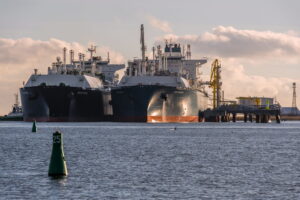Speculations on the re-export of LNG from Qatar by PGNiG can be found on the Internet. The company gives a laconic answer – writes Wojciech Jakóbik, editor-in-chief of BiznesAlert.pl.
Agreement with a trader?
On one of the blogs you can read that an LNG re-export scenario from Qatargas is possible, as evidenced by the lack of a second LNG supply to the terminal in Świnoujście, which was to be planned for January this year. The author of the thesis argues that re-export would be profitable in conditions of high interest in spot supplies worldwide. This could be complemented by the growing importance of traders in liquefied gas trading, as I wrote in the text on a possible PGNiG agreement with such an entity..
– Who could possibly have bought the cargo? I bet on Turkey, the Aliaga terminal, specifically the load carried by Al Nuaman, unloaded from 11th to 12th January 2018 – as written by the author of the text. The Company does not have much to communicate concerning this matter. – Deliveries are made in accordance with the agreed schedule according to which up to three Q-flex ships can call at the Terminal in Świnoujście each month. The contract volume is settled on an annual basis – as the PGNiG Press Office reports.
This statement may be interpreted. Świnoujście can – but does not have to – reach three ships, each of which can deliver LNG from Qatar. Deliveries are settled annually, so if one of the planned deliveries for PGNiG does not arrive, the shortfall could be remedied in the coming months. The company does not intend to disclose its secrets. An eventual re-export of LNG from Qatar would be a major success for PGNiG’s London office. It would mean that, in spite of speculations, especially in the rather unfavourable Russian media, about the exorbitant prices of liquefied gas from Qatar, it would be possible to place it on the global market. As of 2018, PGNiG is to receive 2.7 billion cubic metres of gas annually under the supplement to the Qatar agreement. The PGNiG authorities suggest that the additional agreement contains an attractive discount. If there really was a re-export, this discount could tempt traders.
The market is growing
From the point of view of market development, LNG is a secondary topic. Increasing liquidity and competition will mean that transactions of various types and scale will become more and more numerous. This is evidenced by the endless LNG journey from Grain LNG, some of which may come from Russia, to the terminal in Boston. The gas tanker will eventually reach the US shores after the events connected with bad weather conditions.
It is interesting to note that with the increase in this type of transactions, the importance of the index of LNG to petroleum may decrease, which is particularly important in the times of rising black raw material prices. Contracts indexed with more expensive oil will be less and less competitive in relation to LNG depending on the exchange prices, such as the PGNiG-Centrica contract. As the price of the barrel increases, the premium for the lack of index in the contract will increase. On the other hand, a possible further fall in petroleum prices will be moderated by an increasing supply of liquefied gas.
According to World Energy Outlook 2017 prepared by the International Energy Agency, LNG supplies from the USA will continue to develop. This year’s weather disaster will not change that. American deliveries are expected to reach over 60 billion cubic metres in 2020 and 120 in 2025. The main directions of supply are the European Union, Japan and South Korea, India and China. According to MAE analysts, the cost of supplies to Europe will be higher than gas pipeline deliveries from Russia, but approximately USD 6 out of USD 8 per mmBtu of the US price will be variable costs.








